
Emperor Napoleon
La Grand Armee
64,320 infantry
13,120 cavalry
176 artillery
BATTLE OF BAYREUTH
JUNE 3rd, 1811

Barclay de Tolly
Army of the Rhine
46,560 infantry
6,440 cavalry
48 artillery
|
Emperor Napoleon 64,320 infantry |
BATTLE OF BAYREUTH JUNE 3rd, 1811
|
46,560 infantry |
Barclay de Tolly's Army of the Rhine was given
the task of operating between the Prussian and Austrian armies in the war
against the French. Unfortunately, the distance between the armies was great
enough to all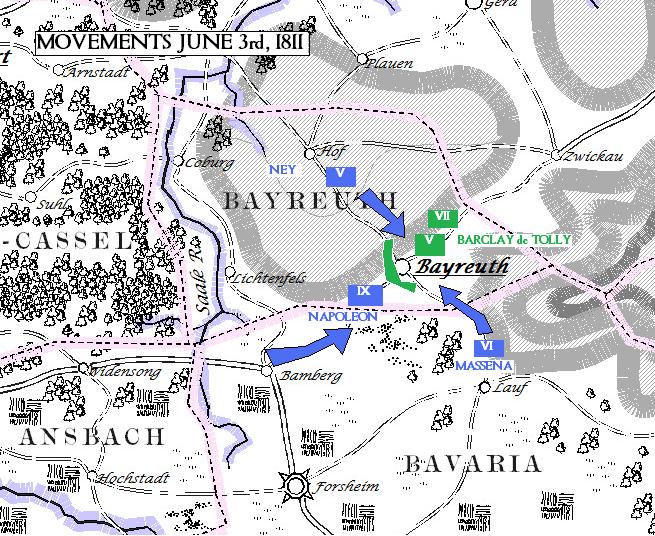 ow
the French to operate a Battalion Carre between the armies.
ow
the French to operate a Battalion Carre between the armies. Napoleon drove four wings forward through the gap between the Frankenwald and
the Ore Mountains and the Russians were standing in their path at Bayreuth.
Napoleon drove four wings forward through the gap between the Frankenwald and
the Ore Mountains and the Russians were standing in their path at Bayreuth.
On May 27th, the Russian VII Corps crossed the Saale to Widensong where they ran headlong into two Corps of the French under Ney. They were beaten and retreated back across the river to Bamberg where they got hit by two French Corps of Massena's up from Forsheim and also the pursuing troops of Ney. The remnants of VII Corps were broken when they routed back to Bayreuth. Meanwhile, de Tolly's V Corps was probing near Lauf so unable to support.
The Russian depot at Bayreuth was dismantled then to prevent it falling into French hands.
In the first days of June, Russian V Corps tried an advance to Lauf but ran into the whole of Massena's wing massed there and were repulsed back to Bayreuth. Ney meanwhile, was forced marching his heroic V Corps from Lichtenfels (where it had earlier marched in anticipation of a major battle at Bamberg), up around through Coburg and Saalfeld and down to Hof. Ney's IX Corps, all veterans, advanced from Bamberg to Bayreuth on June 2nd, fully expecting that Massena and V Corps would be reinforcing on the following day at Bayreuth. Napoleon arrived at the Bayreuth battlefield that evening to take charge of the contest.
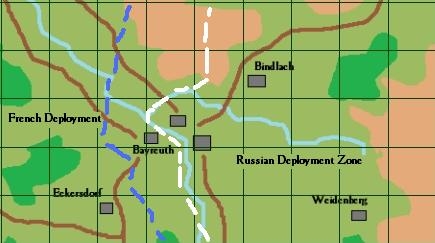
Barclay de Tolly would opt for a deployment in depth, perhaps not wanting to get caught in any anticipated pincer movements. His only fresh troops were the garrison of Bayreuth. The divisions of the Army of the Rhine that were not part of any corps were deployed in the front with V Corps as a second wave and the broken VII Corps (less than 6000 men) deployed at the rear. A double envelopment was exactly what the French would attempt.
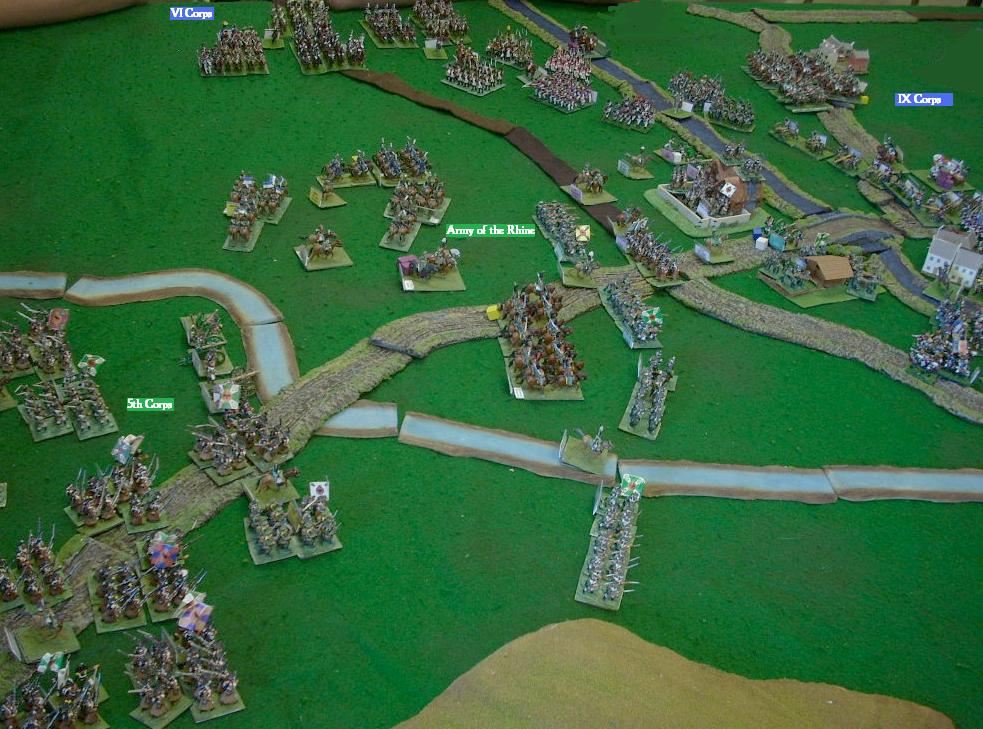
A view of the Russian depth with Bayreuth on the right and Bindlach behind, on the left. French IX Corps's veterans are allowed freedom to manoeuvre against Bayreuth's garrison. Also, overwhelming artillery superiority would allow the French to destroy any Russian gun left to face them in Bayreuth.

Before noon, IX Corps has completely surrounded the last of the Bayreuth garrison and compelled its surrender.
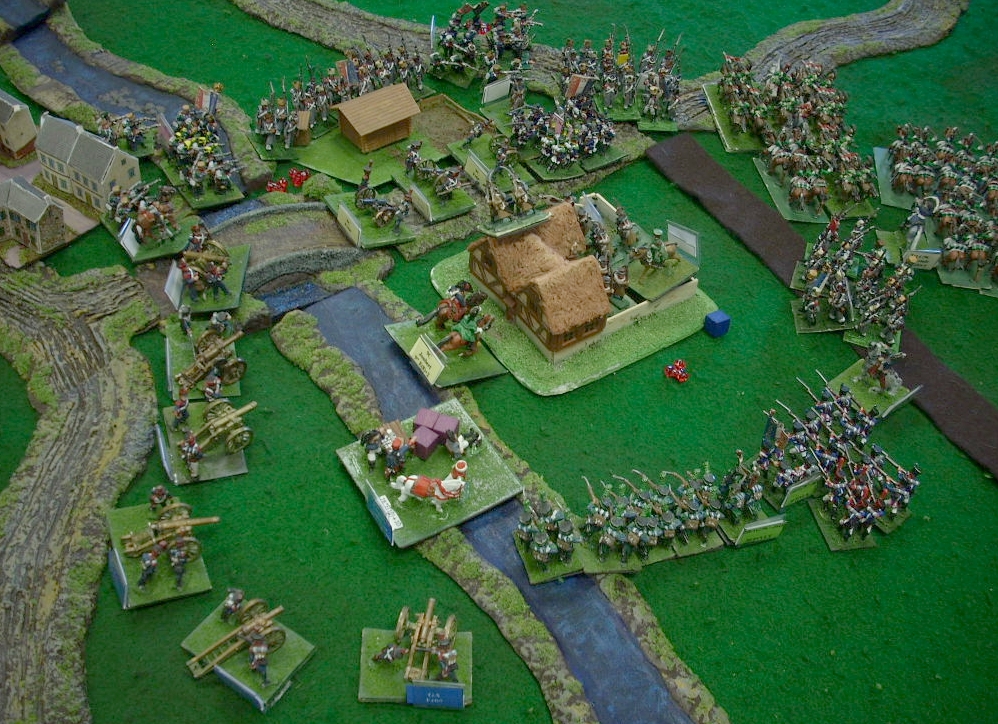
Massena's cavalry also enjoys a vast superiority and it drives back the advance Russian cavalry. In the face of this, the forward elements of the Russian defence are retreated back behind the river to join the line of Russian V Corps.
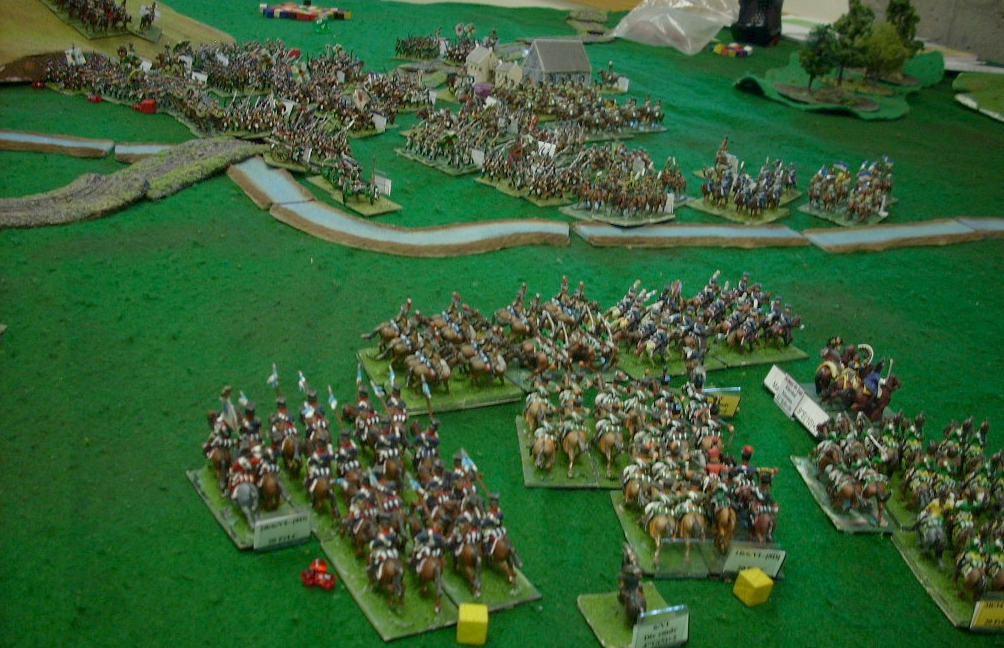
By 1300, the French are pushing across the river line at multiple points. The Russian defence would be dynamic and determined now. Using the famed 'coiled snake' technique, several French units would be sent reeling but the weight of numbers and the quality of the French, in particular the veterans, would prove decisive.
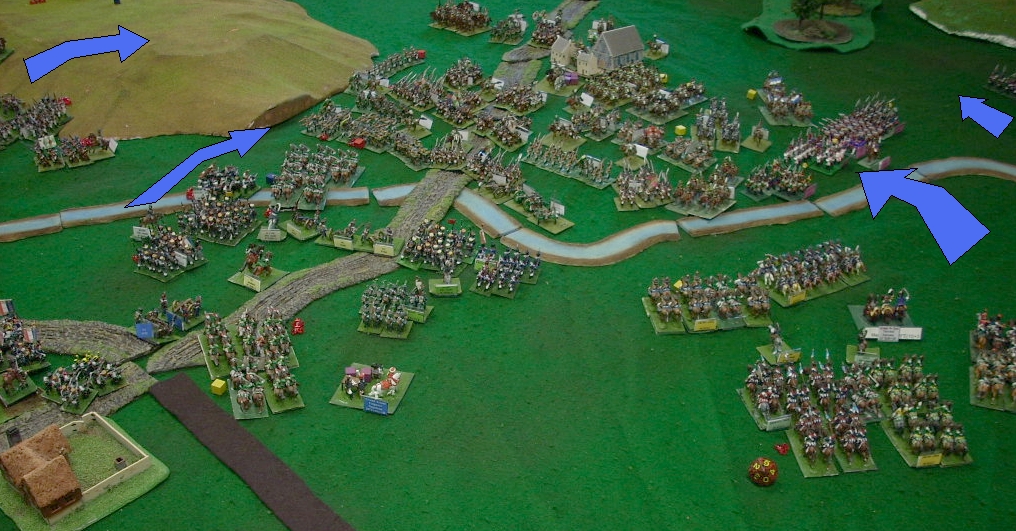
Russian cavalry is undaunted by the presence of the massive numbers of French horse and uses the waterline to allow them some ability to harass the attacking French infantry columns.
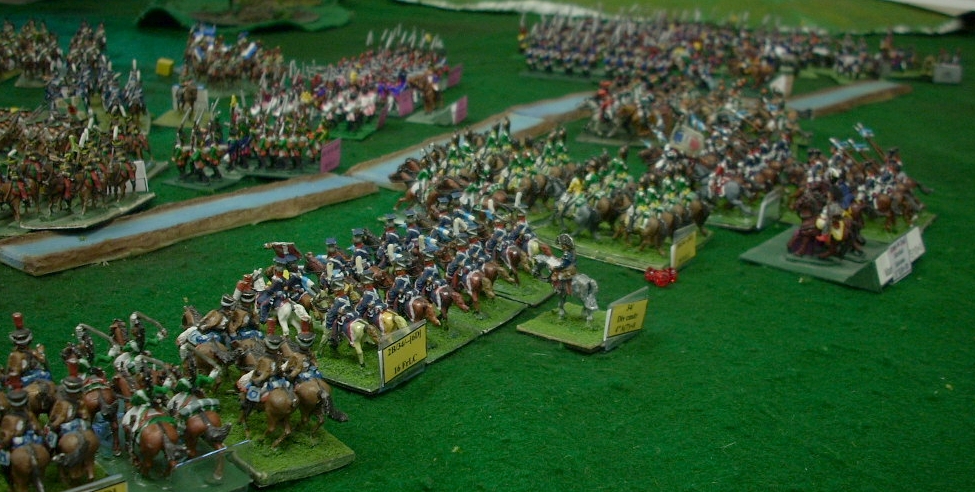
Despite some bold Russian actions and French carelessness, the encirclement continues and forces the Russians back into a tighter circle.
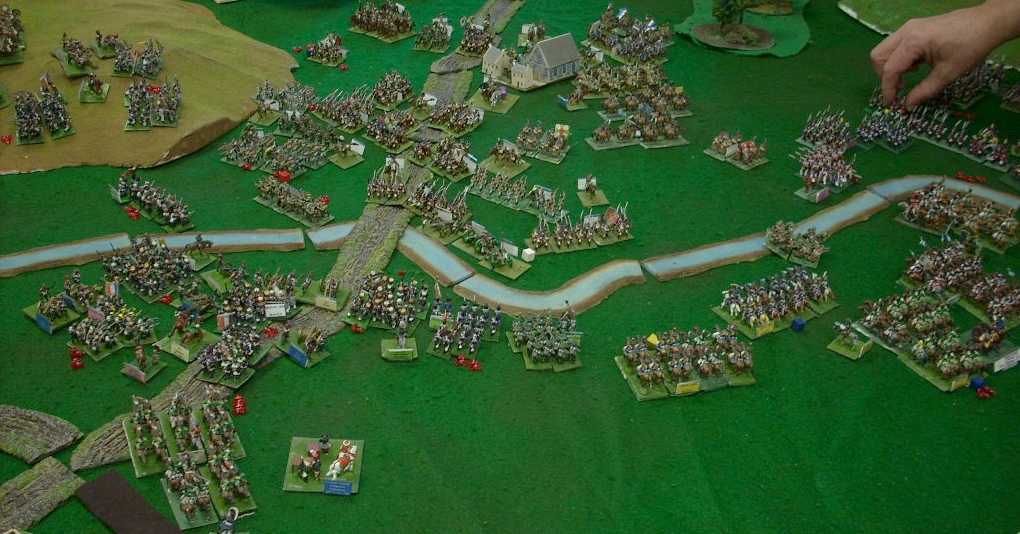
The view from Napoleon's position near the bridge. It is a compact battlefield.
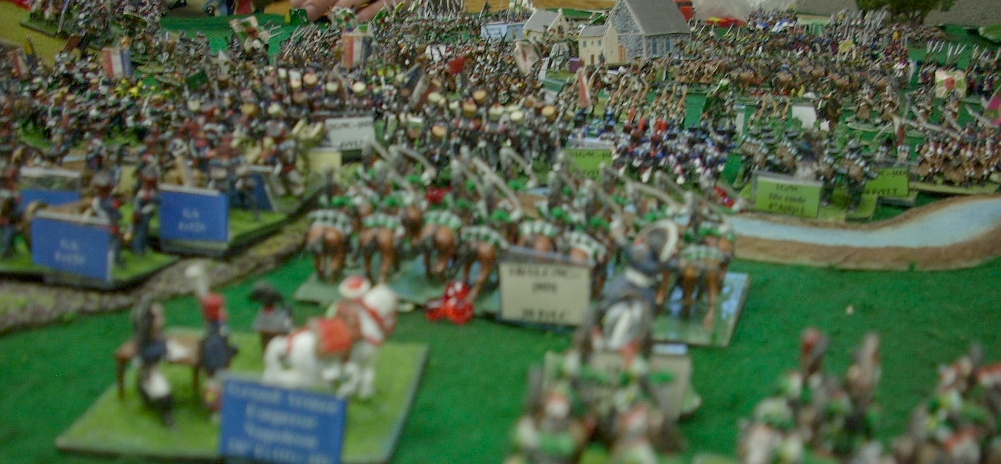
Massena's advance, though with a strong cavalry force, becomes one of infantry columns charging into massed Russian cavalry that is too disordered to react properly. Near three in the afternoon, Barclay de Tolly will run out of options. He must order the general retreat to Zwickau before the route out is closed.
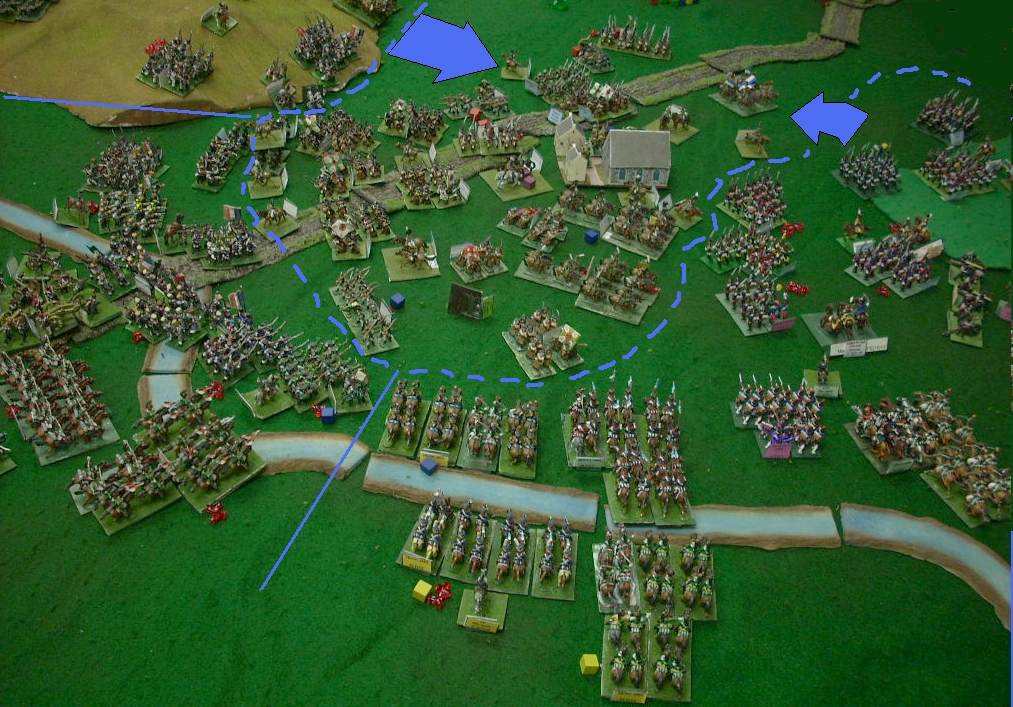
Just as the battle ends, Marshal Ney would put himself at the head of a brigade of Chasseurs, preparing to ride down upon the breaking Russian army to great glory. This would prove costly though as that cavalry had been providing support for the artillery of V Corps. A unit of Russian dragoons would seize the opportunity and in a magnificent charge, would destroy three French batteries.
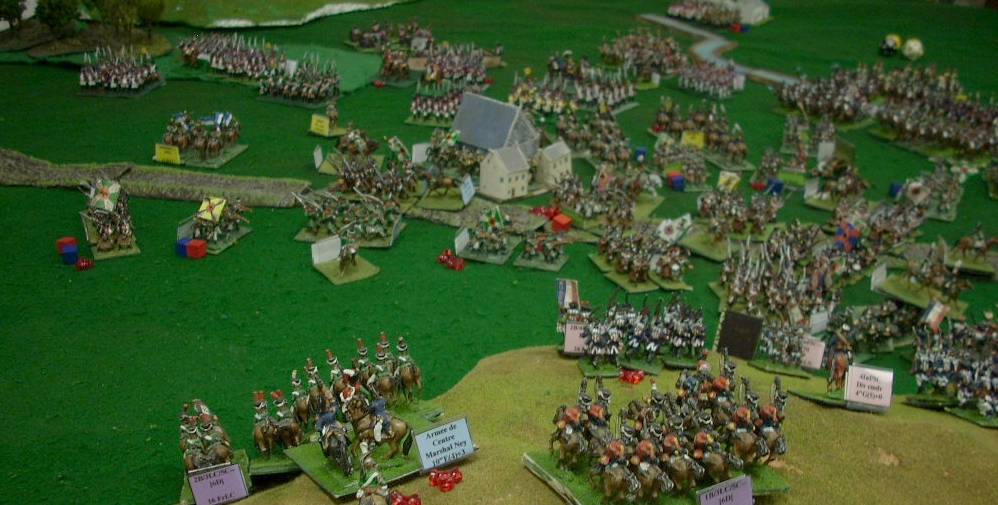
Estimated Allied Casualties: 20,000
Estimated French casualties: 3000